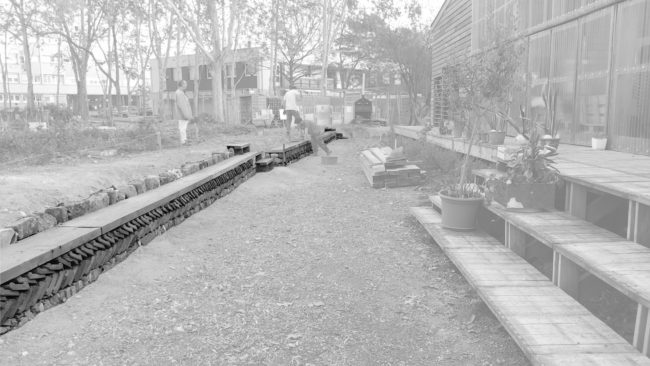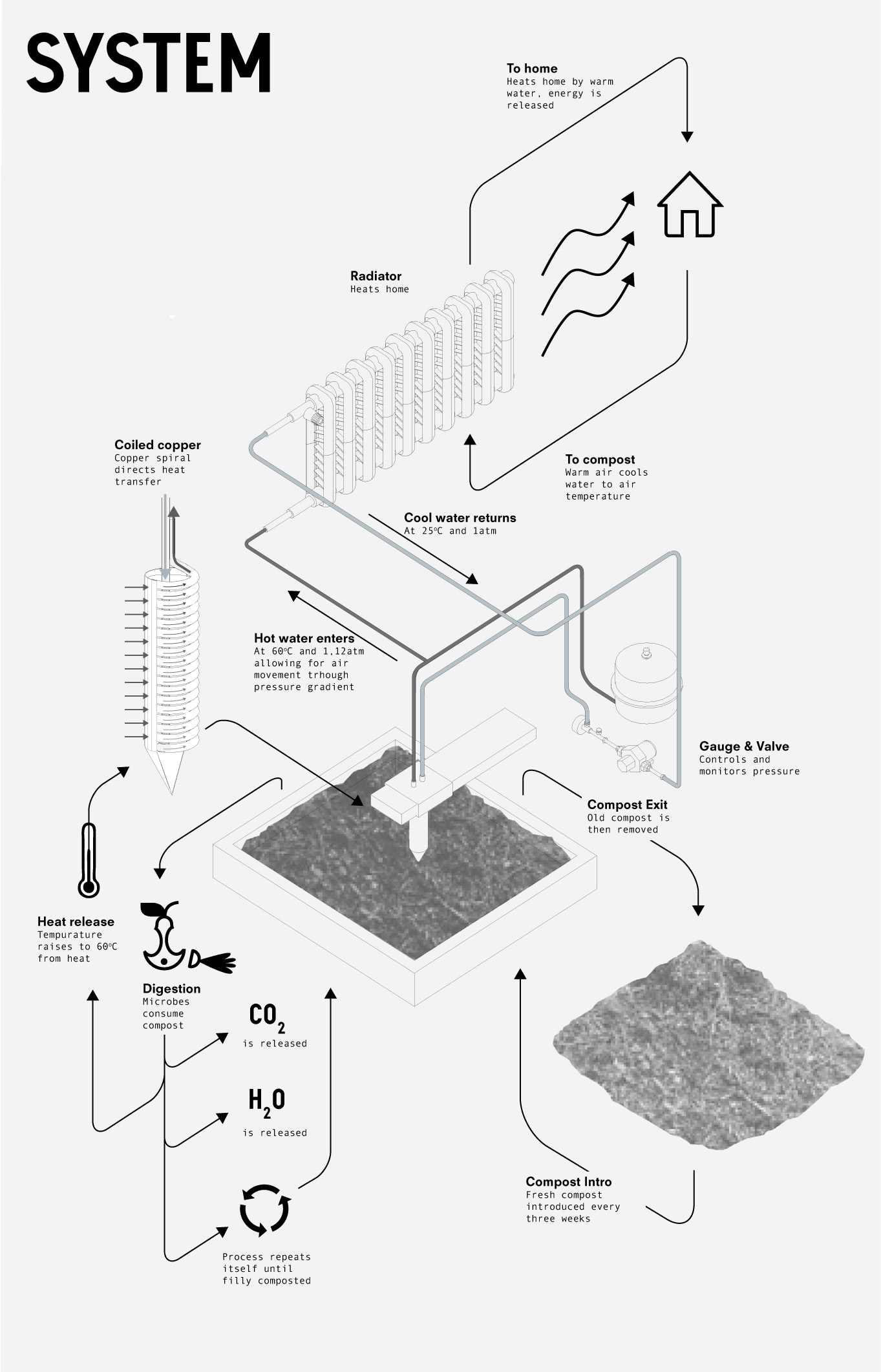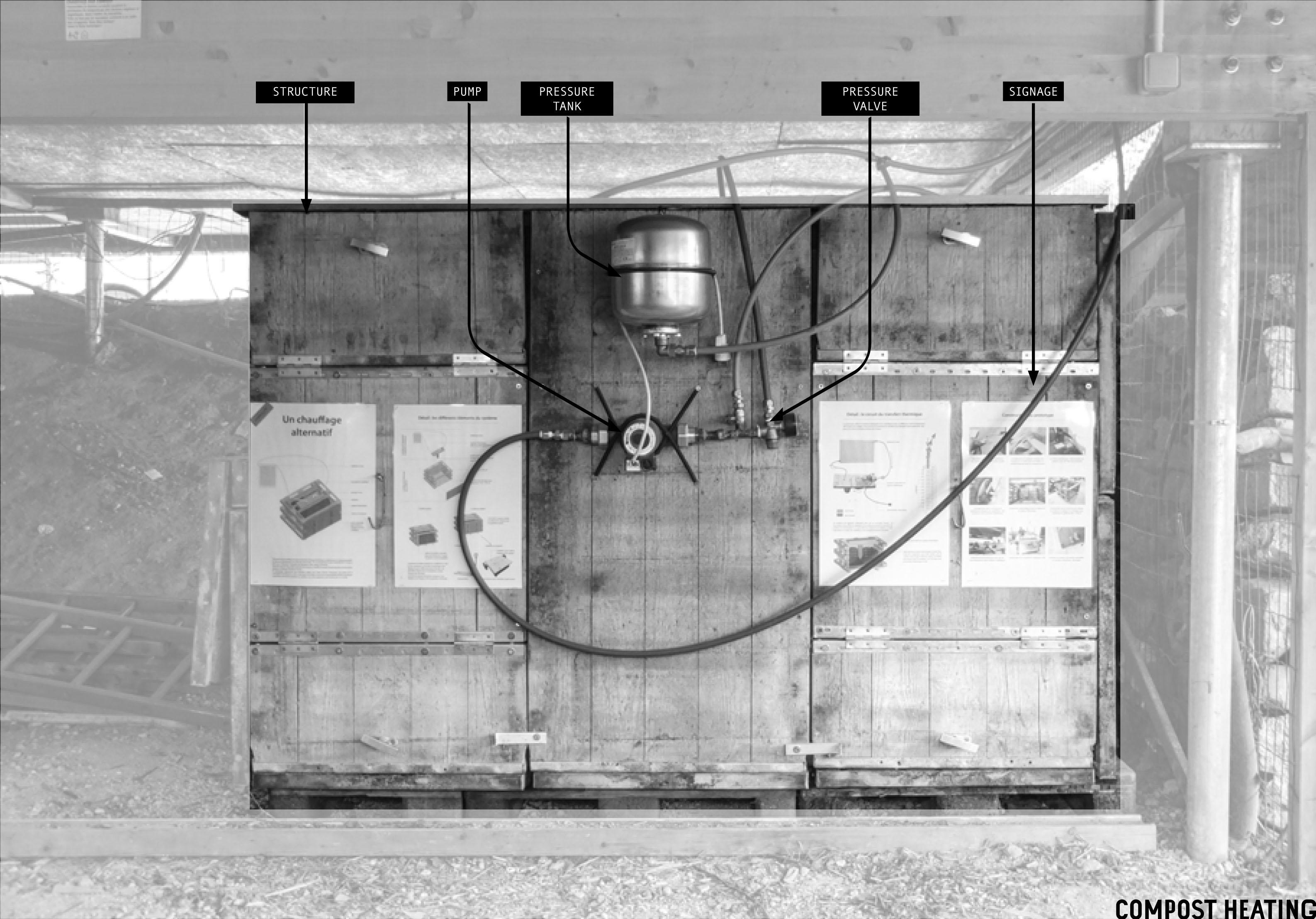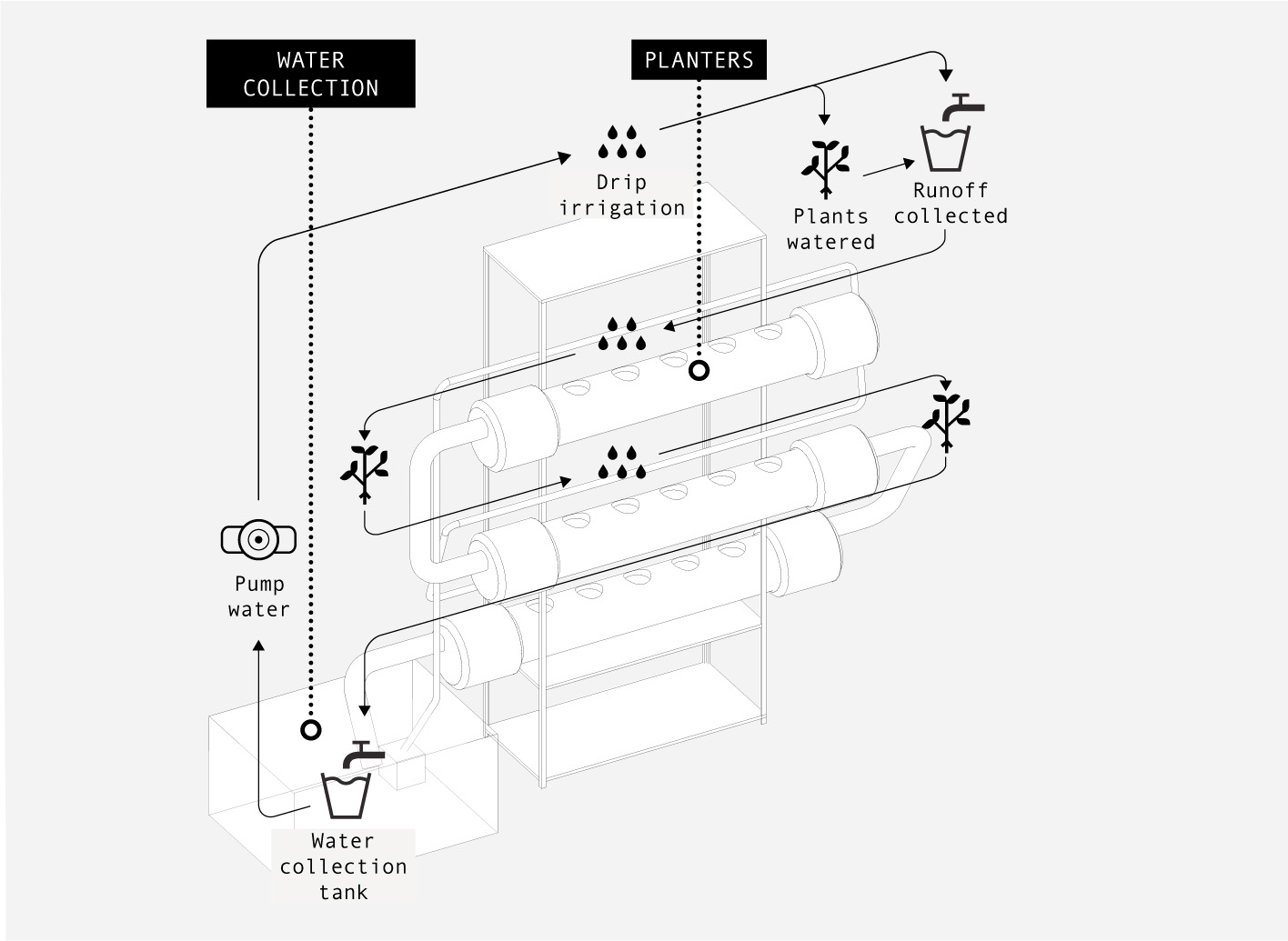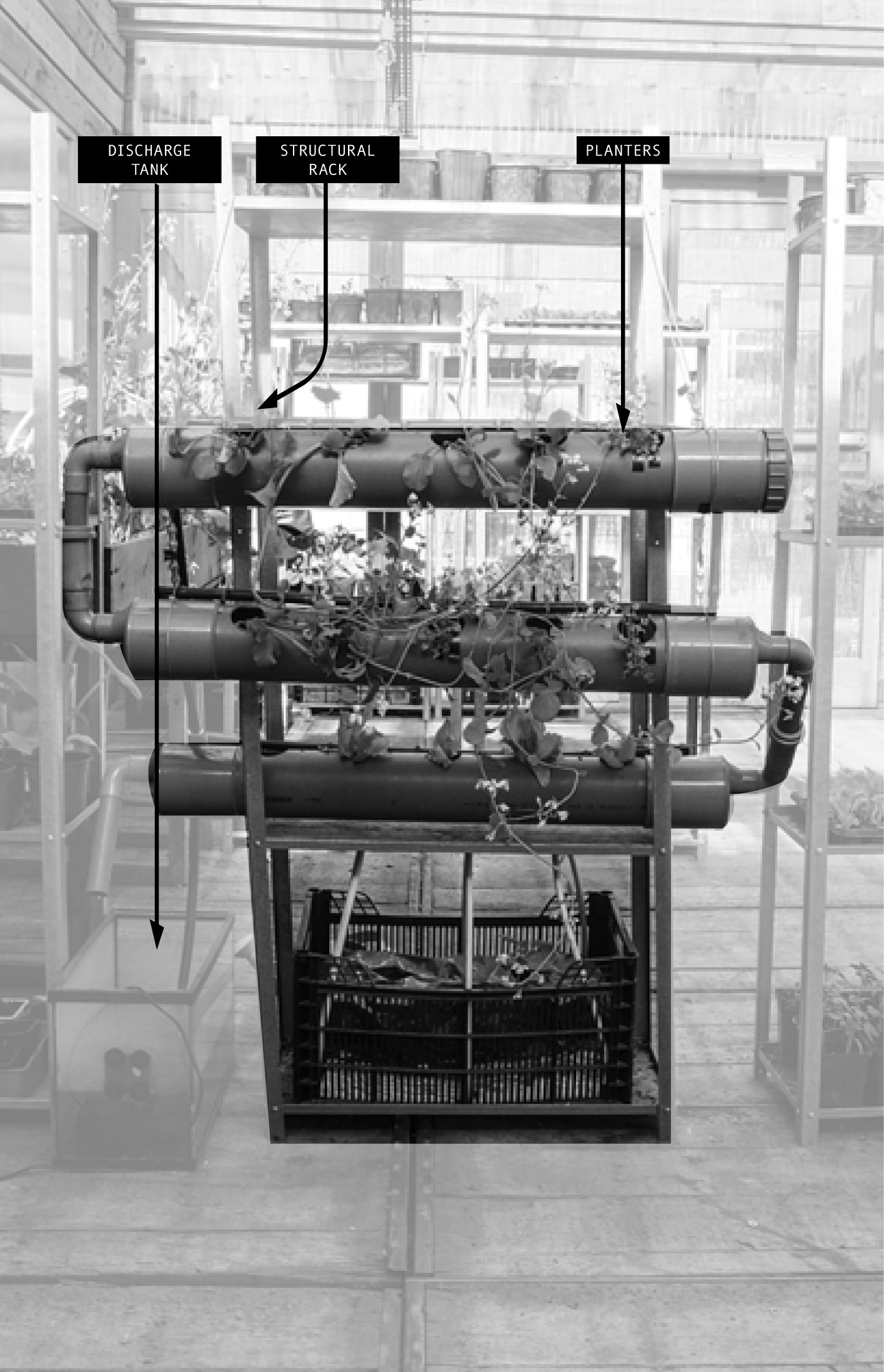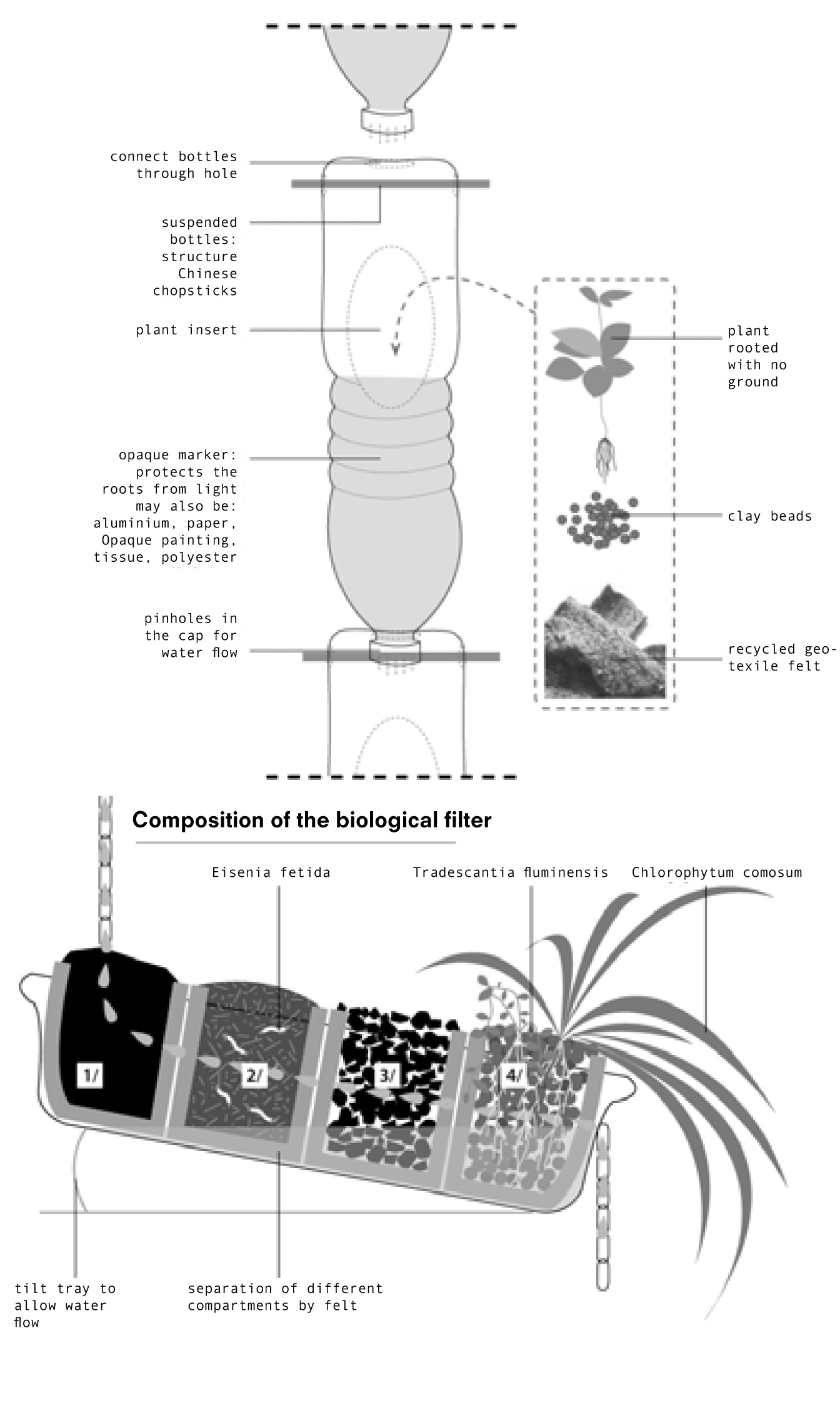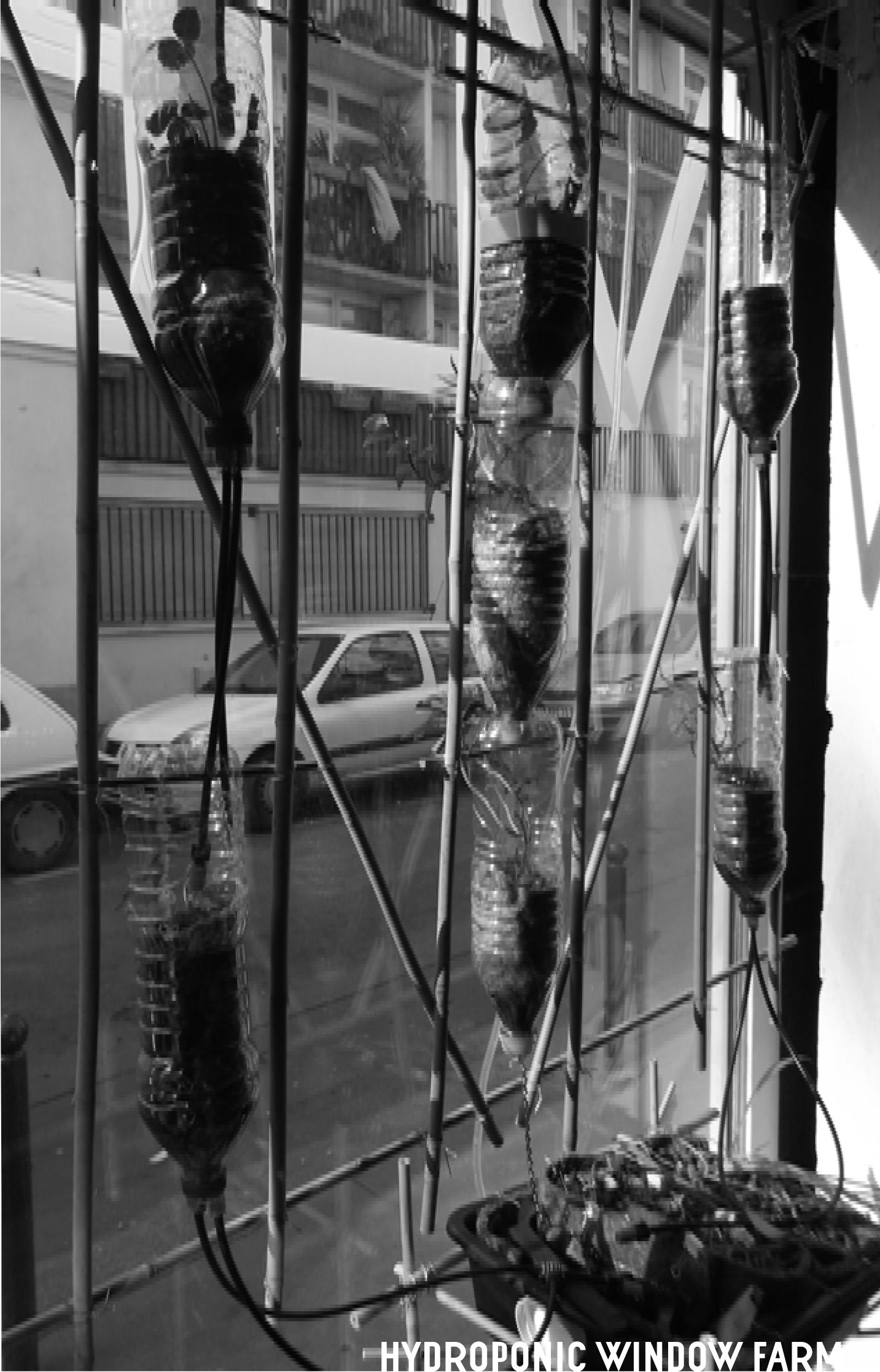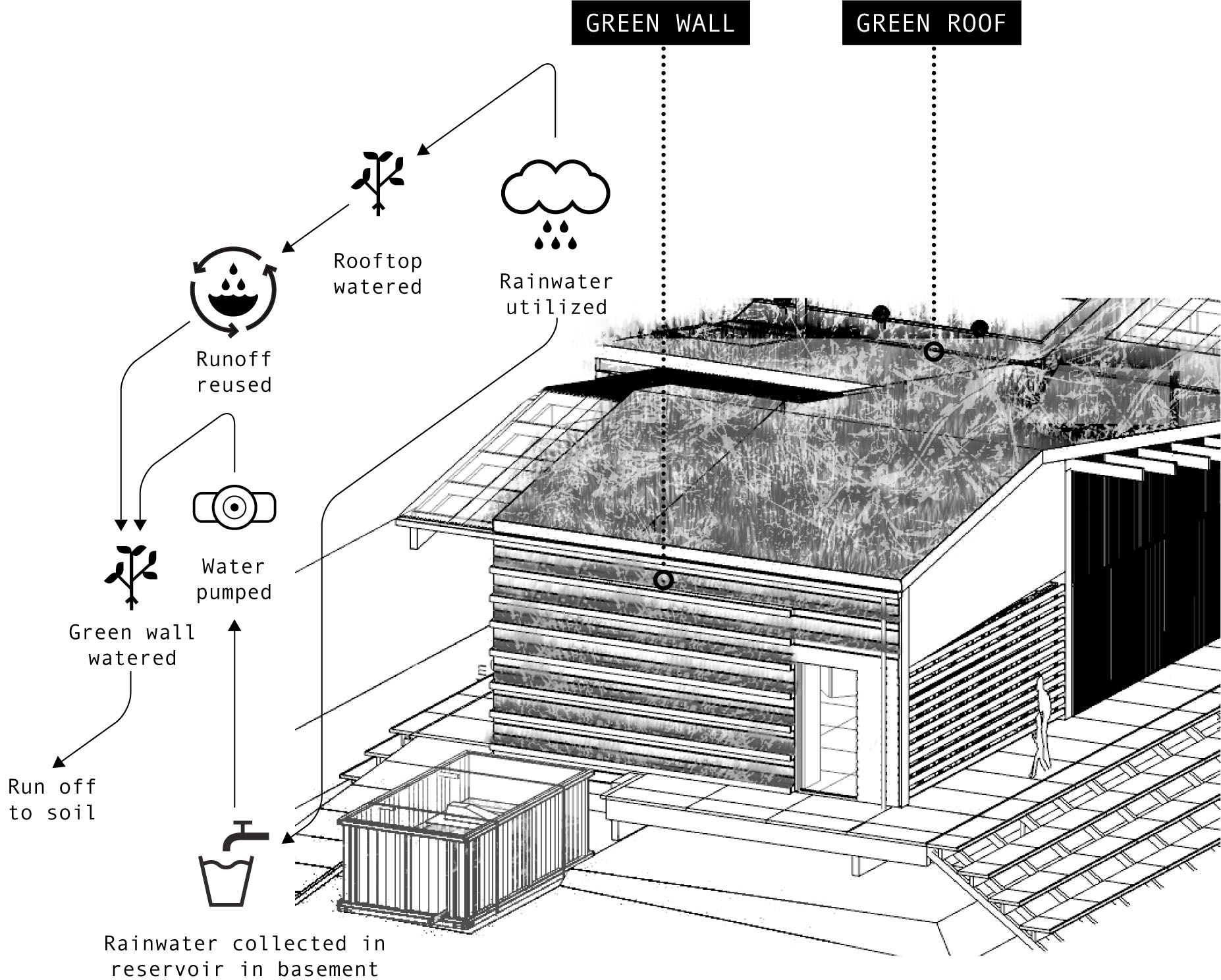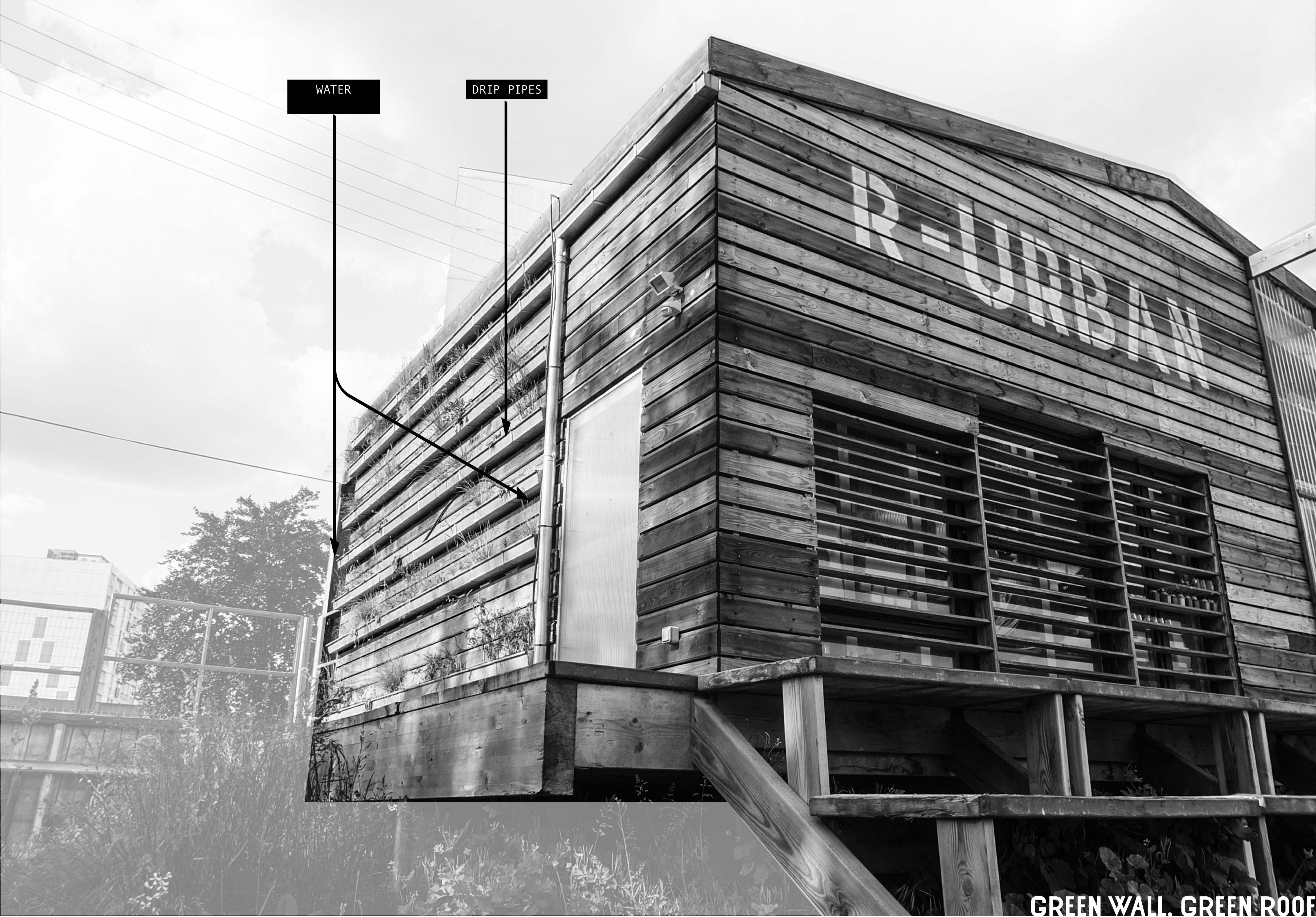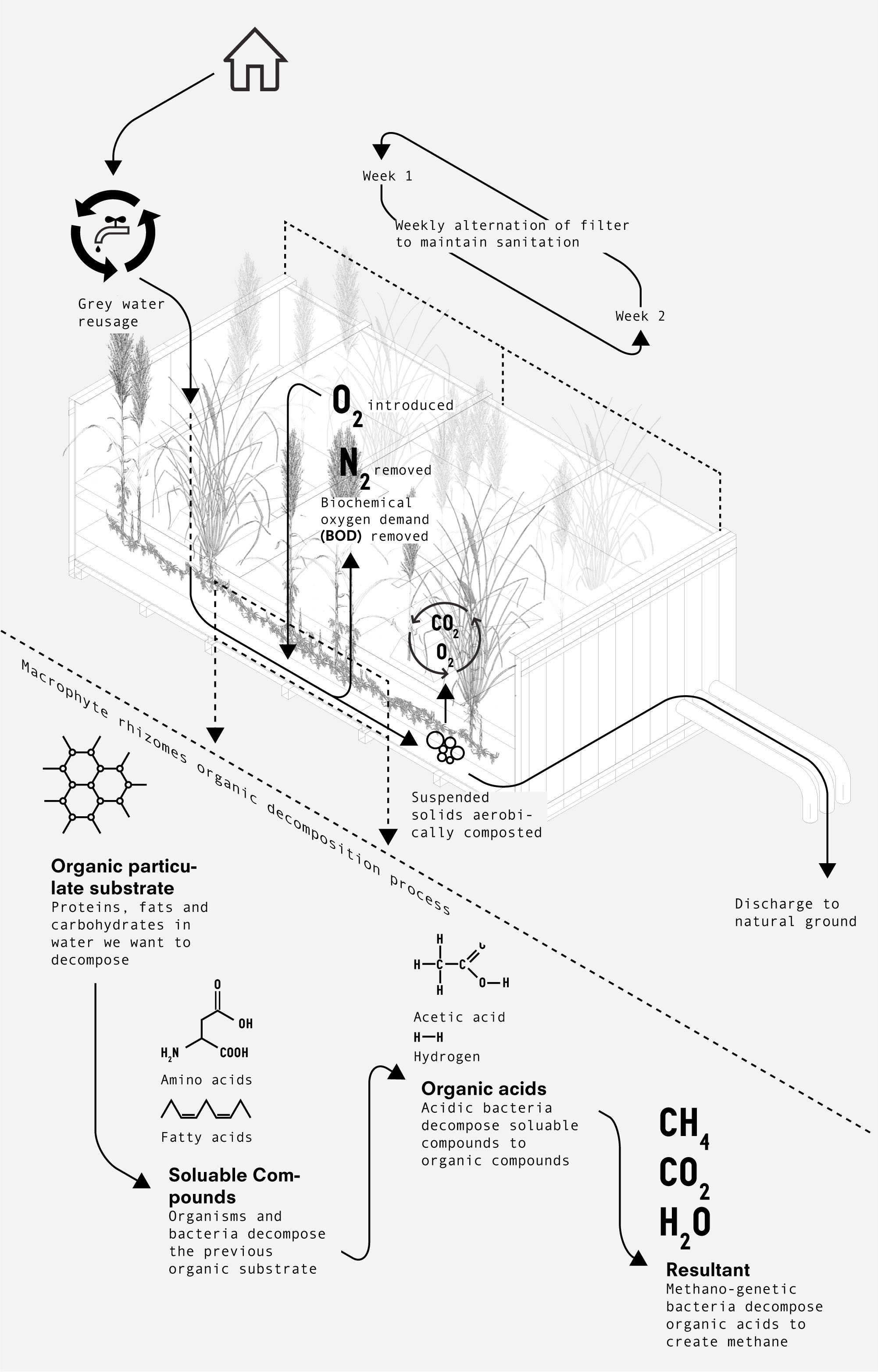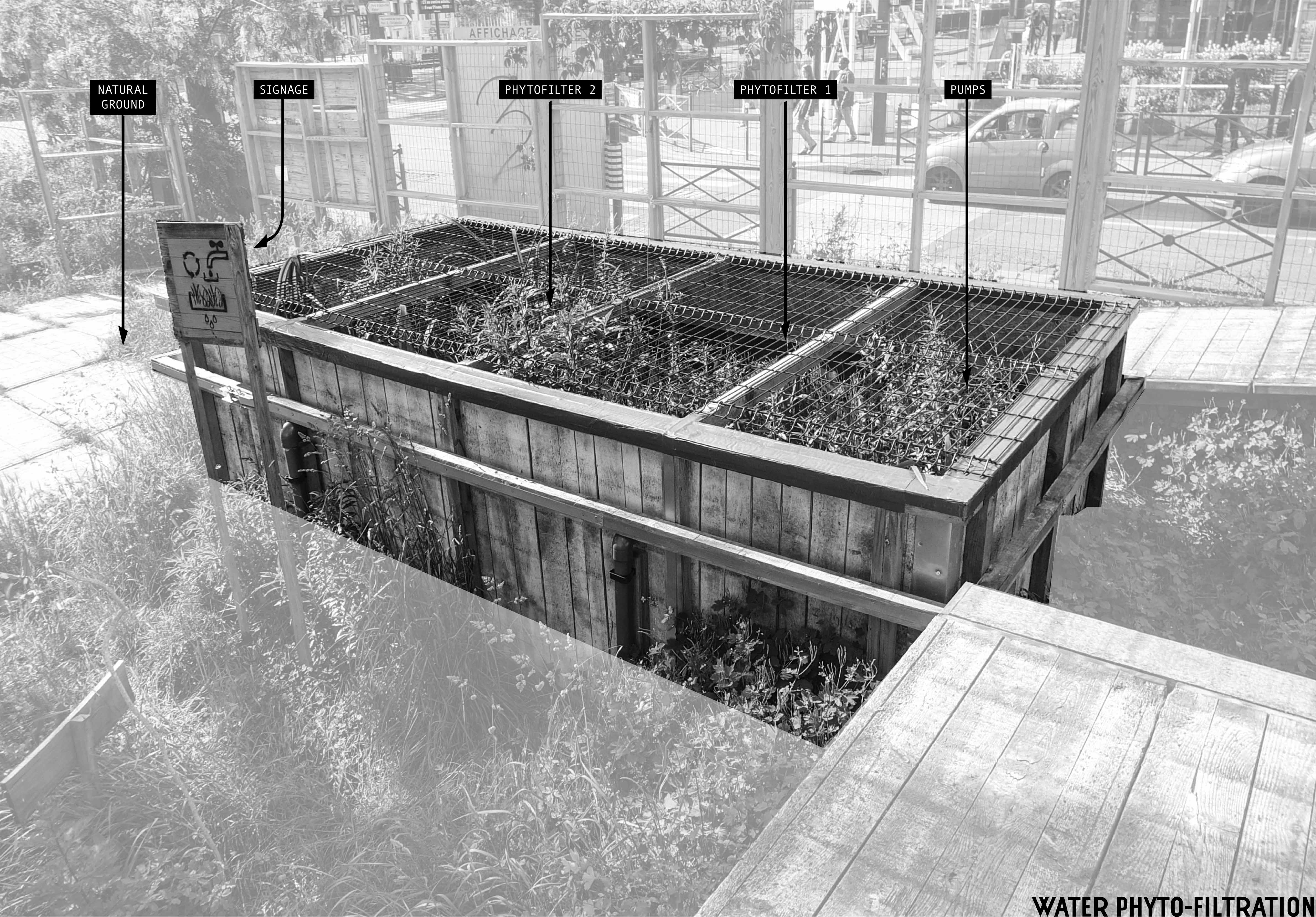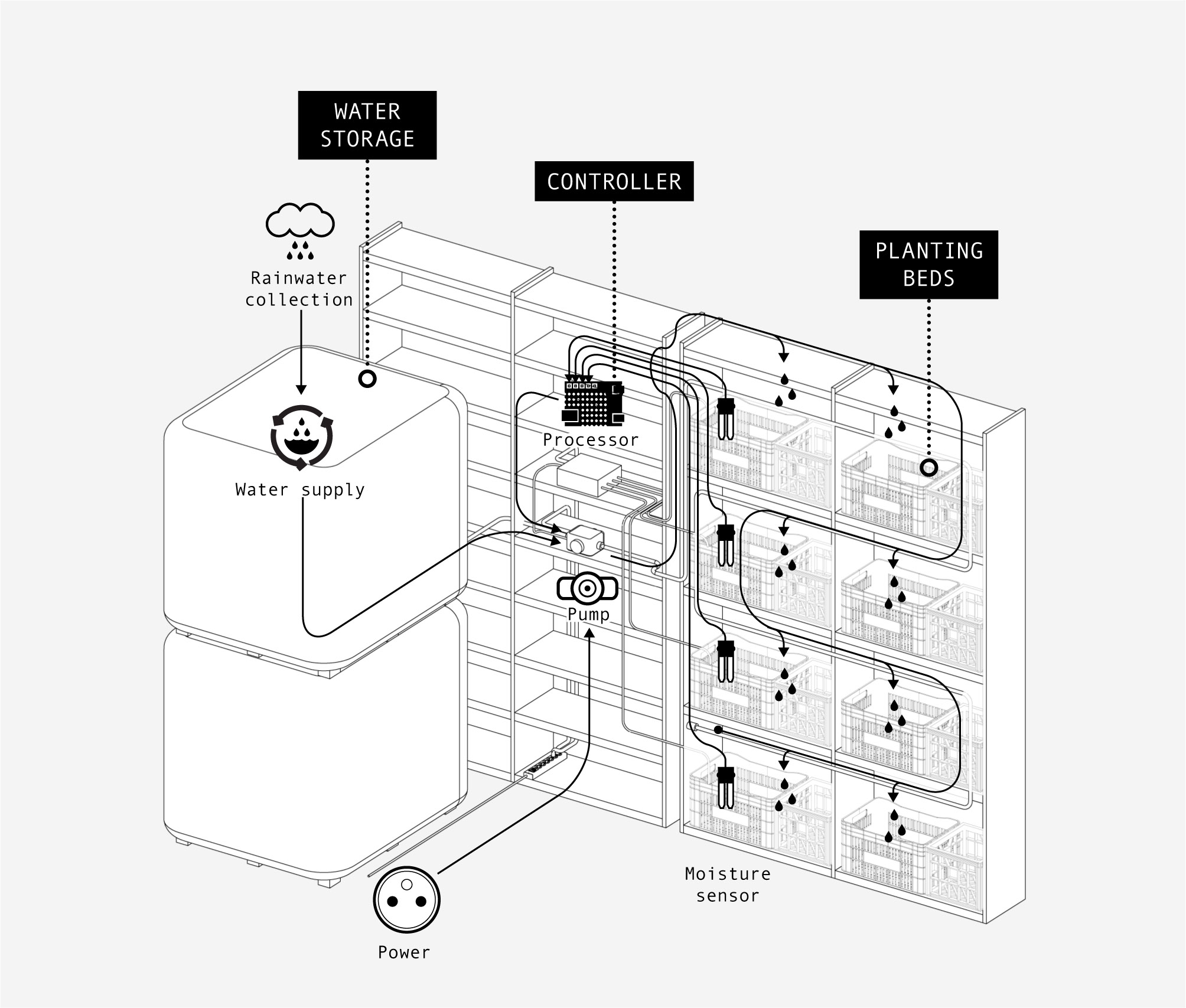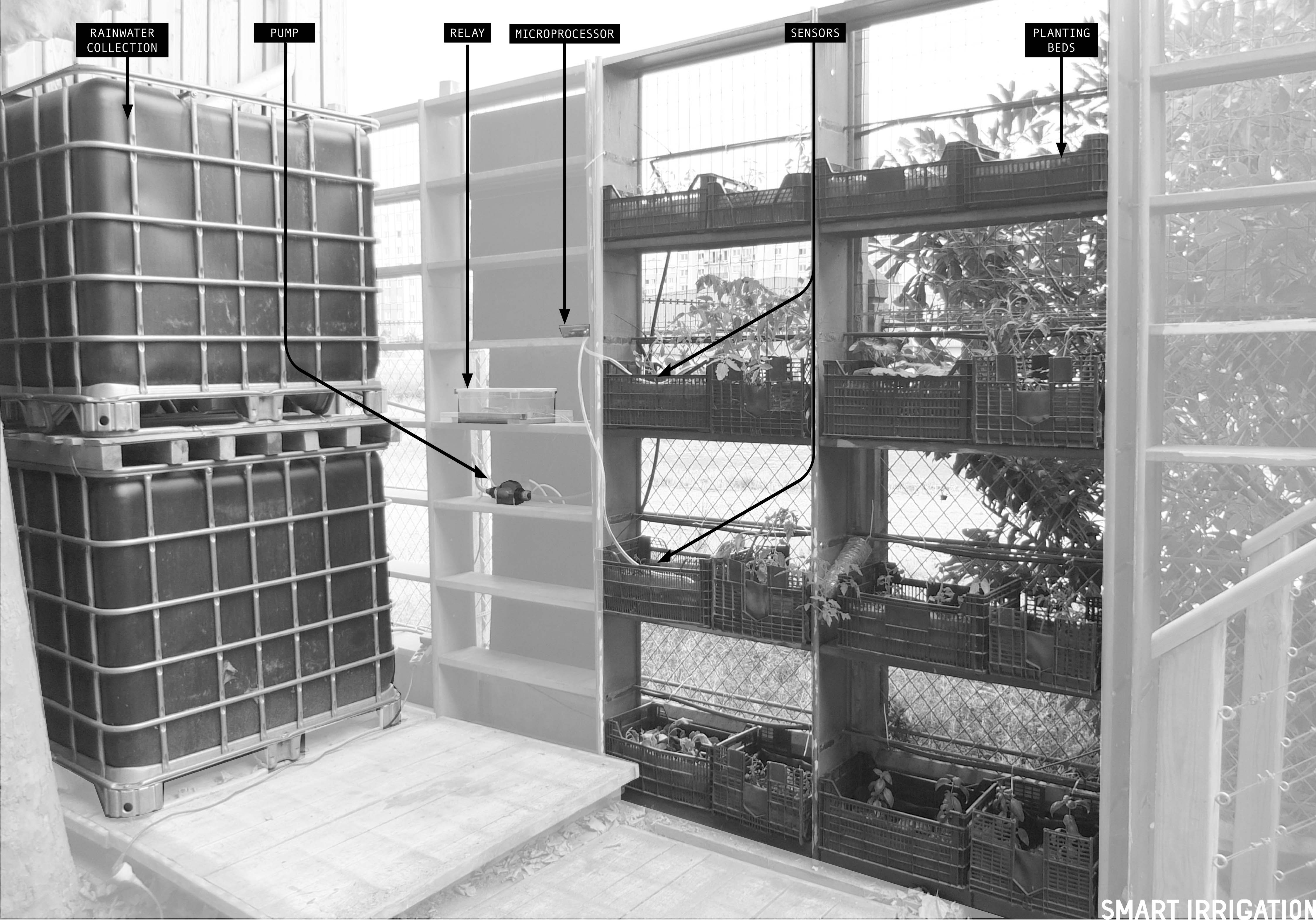Micro-devices and Prototypes
R-Urban has prototyped a series of ecological Micro Devices for the Recyclab and Agrocite Units. These micro-devices for power generation and food, water management and organic waste are realized from local materials and with simple technology. They are supposed to promote innovation within the reach of citizens.
RETAINING WALL

Based on the cradle to cradle principle, materials are reused without transformation, rethinking their constructive use. For a small height, a retaining wall without mortar is created by first placing a horizontal plane with the bricks and then interlocking two rows of tiles on which a bed of gravel is placed to wedge and level the whole, to receive the reused timbers. In addition to serving as a support by enhancing the value of materials from demolition, this low wall creates a user-friendly foundation with an atypical aesthetic. This solution has the advantage of being technically simple, but a special care must be paid to the choice of materials and their stacking.
COMPOSTING DRY TOILETS
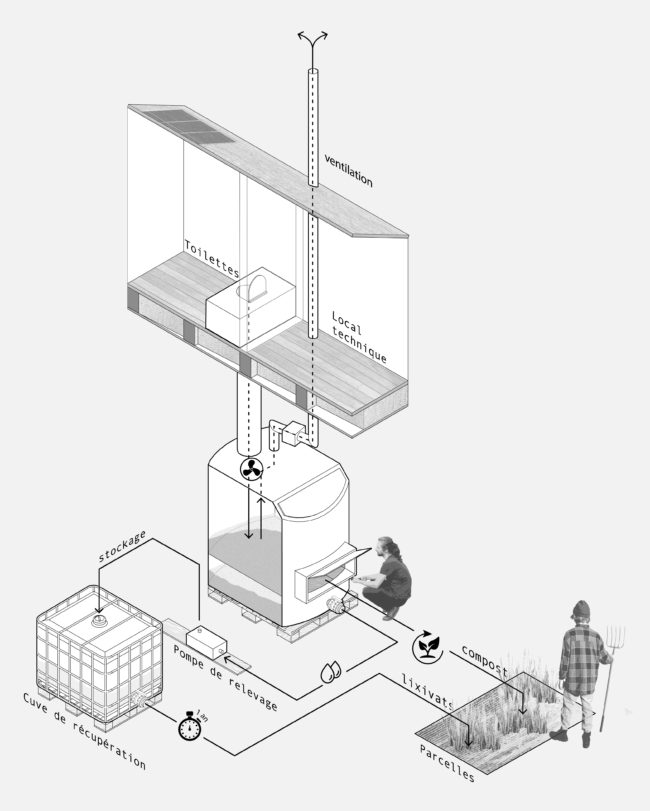 The Clivus Multrum, a dry composting toilet, is an installation that is part of an ecological approach to the recovery of human waste and the saving of natural resources (no water used). The compost created by the dry toilets will make it possible to fertilize the cultivated plots and thus avoid the use of industrial fertilizers that are harmful to the soil.
The Clivus Multrum, a dry composting toilet, is an installation that is part of an ecological approach to the recovery of human waste and the saving of natural resources (no water used). The compost created by the dry toilets will make it possible to fertilize the cultivated plots and thus avoid the use of industrial fertilizers that are harmful to the soil.
This system has the particularity of separating solid and liquid, generating two types of compost: on the one hand a rich compost and on the other hand leachate, a very effective fertilizer solution. By a gravity separation system, the liquids are recovered in the lower part of the composter. If a certain part will evaporate, the rest will be stored in two 1000L tanks. After a year of rest, the urine is transformed into an odourless, nutrient-rich saline solution for garden cultivation. The faeces, on the other hand, dehydrate under the effect of a continuous air flow generated by active ventilation and then decomposed into a rich compost, a true natural fertilizer.
This system has many advantages. First, because of the presence of sawdust directly in the tank, it is no longer necessary for users to throw it away after passing through. The separation of the flows allows a better management of the compost as well as a reduced maintenance (once a month for the tank and once a year for the liquids). Finally, the installation of active ventilation prevents unpleasant odours (rejected on the roof).
In addition, these toilets are part of an approach to saving natural resources, particularly water. It should be noted that on average 30% of the water consumption of a household comes from flushing toilets, between 6 and 10 L of drinking water are sent directly to the sewers with each use. In addition, the addition of water to our waste significantly increases the amount of pollution to be treated in our wastewater. It will take about 40L of water to remove 1.7L of waste. Dry toilets, by definition, do not use water and contribute to better management of our resources.
COMPOST HEATING
This heating system recovers and reuses the thermal energy produced by the compost during the biological process. At the heart of the volume of 1m3, the temperature can reach 60 °. In this iteration the system will serve to heat all the buildings of Agrocité during the winter. With this experiment parameters , which remains largely understudied in world .
HYDROPONIC SYSTEM
Hydroponics (or soilless agriculture), is the cultivation of plants performed on neutral and inert substrate (sand type pozzolan, ball clay, rock wool etc.). We added to the system a filtering vessel in the path of the water. The advantage of this system is that the drainage and replacement of water are no longer necessary, since the operation is closed cycle. thanks to the biological filter, water nutrients throat with each pass and thus continues to be able to feed the plants.
HYDROPONIC WINDOW FARM
The “window farming” is the latest evolution in the field of sustainable production of short-cycle food. This movement, initiated by the New York Britta Riley, is a way to produce food using a simple but effective system in urban environment. This serves plants contained in a recycled plastic bottle. Easily available, great waterproof and contoured shape fits particularly to a vertical flow system. Transparent, thin plastic, it lets the sun and acts as a mini greenhouse for plants.
Green Wall, Green Roof & DRIP IRRIGATION
The building has a green vertical garden on its east and west facades as well as on its roof. Rainwater irrigates the roof and the drip system is employed for the walls and rest of the plantations. This system has two sources of water. The first comes from harvesting rainwater stored under the building in a storage basin. The second source of water is water in the city. It comes from a tap located at the mezzanine. Both are used for the garden.
Water Phyto-filtration
The system presented is the “Jardi-assainissement.” Household grey water from the shower and kitchen are collected and then injected into the filter. The filter is composed of two planted beds arranged in parallel, which alternatein usage per week. The filter is planted with macrophyte rhizomes, whichpromote bacterial activity to consume pollutants; purifying the water, which isdischarged to a planted infiltration area and then the ground natural.
Smart Irrigation
The smart irrigation system is operated by a network of microprocessors which “think” and “decide” then the plants need to be watered according to information from its moisture sensors, rooted within the soil of the plants. This system means that little to no human intervention is needed, creating an autonomous vertical garden. Once activated, the water is pumped from a rainwater storage tank and distributed via drip irrigation.



